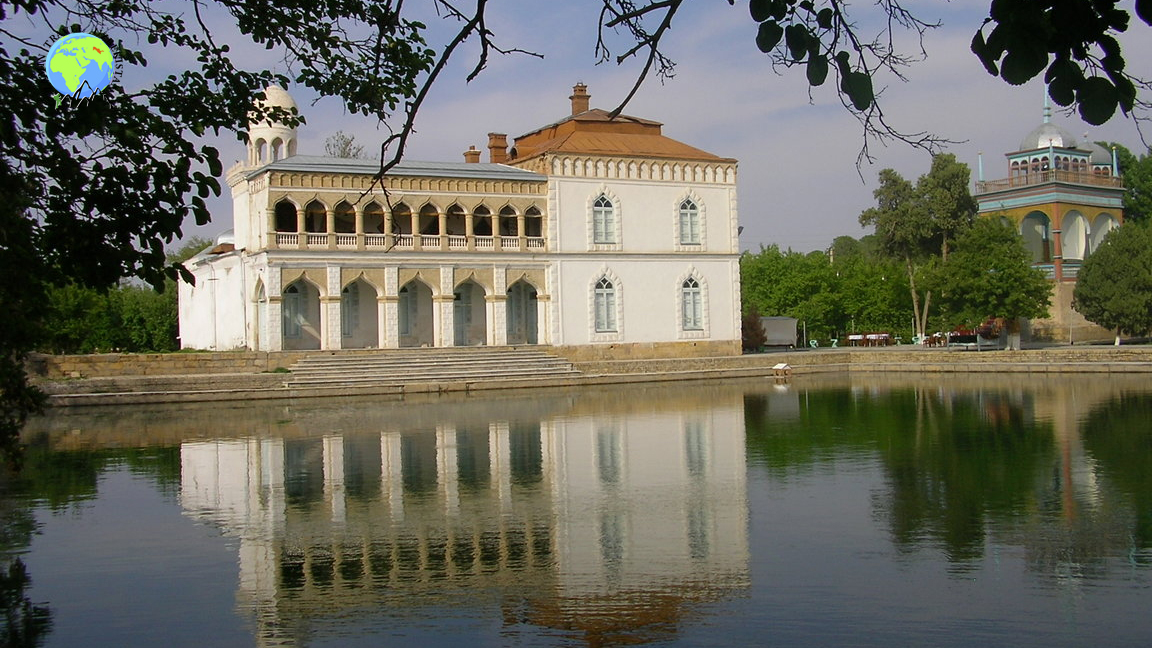


Of the numerous palaces in Bukhara, the Sitorai Mochi-Khosa, the summer residence of the last Bukhara emirs, is one of the most beautiful and best preserved palaces. The palace is located approximately 2.5 km north of Bukhara on the road to Gijduvan. The first structures in this picturesque area were built in the mid-19th century during the reign of Emir Nasrullakhan. In the 1880s, his successor Muzaffarkhan built a palace for his beloved wife, Sitora-bonu. The best Bukhara craftsmen were sent to Russia to learn the fine art of building mansions. Soon afterwards, under the direction of the architect Hajji Khafiz, a rich set of rooms was built, including a throne room, which forms a peculiar mixture of European and Asian architectural styles. A park with fountains, pergolas and loggias was created around the palace. The ruler's wife died young, but her name remained connected to her name, giving the palace its name, Sitorai Mochi-Khosa, which can be translated as "Palace of the Moon and Stars". The main structures of the residence were built during the reign of the last Emir of Bukhara Alimkhan in the 1910s and 1920s. The new palace complex consists of an arch over the gate, several buildings and a greenhouse. The main building of the palace includes the emir's private apartments, the so-called Salomkhona with an important ceremonial terrace, a living room, throne room, a series of waiting rooms, and the treasury. One of the waiting rooms and the White Throne Room are decorated with masterpieces from Uzbek frescoes and stucco “Ganch carvings”. The waiting room is made in a traditional fresco of geometric decorative patterns in tempera by Usto Khasanjon Umarow in 1912; these frescoes are still in very good condition. The mirror walls of the glittering Khona'i Safed throne room were worked out with the best ganch stucco by the outstanding Bukhara master Usto Shirin Muradov in 1914; the walls are laid out with richly patterned vertical and horizontal panels, niches and inlays. The entrance to the main building was made by Nurata craftsmen, is guarded by two marble sculptures of lions. Marble heads of fantastic creatures and dragons adorn the overflow of the water basin.